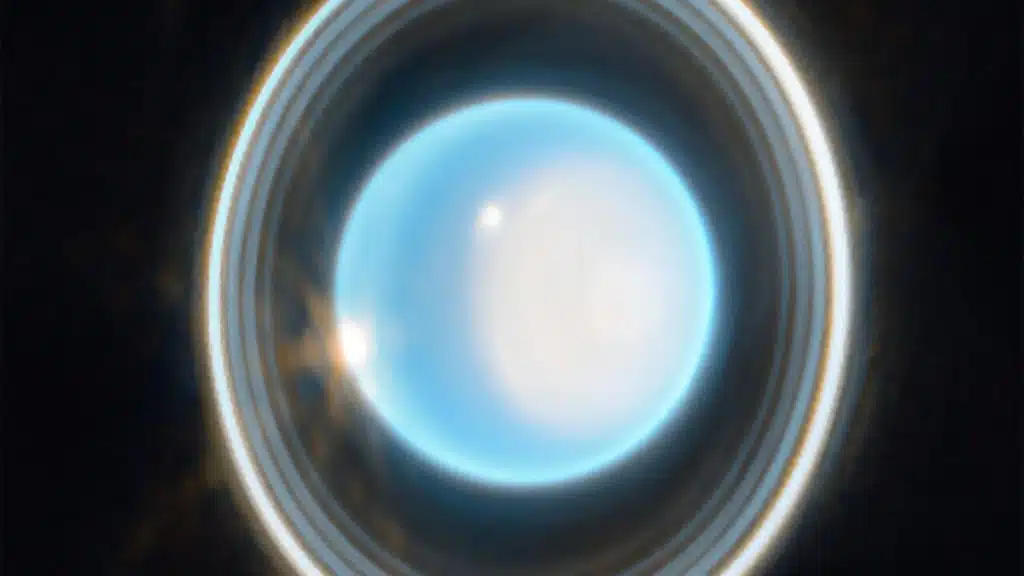
The NASA/ESA/CSA James Webb Space Telescope has captured an image of Uranus, our solar system’s seventh planet from the Sun, and it can easily be described as “stunning,” according to a photo release that the European Space Agency shared on Wednesday. The new picture of Uranus shows off the ice planet’s rings, which comprise what some believe may be debris from shattered moons, as well as its bright atmosphere, composed of mostly hydrogen and helium, per NASA. Launched on December 25, 2021, the James Webb Space Telescope is a marvel of engineering that features mirrors composed of gold-plated beryllium, although it ultimately cost $10 billion USD to make.
From an EESA photo release:
This infrared image from Webb’s Near-Infrared Camera (NIRCam) combines data from two filters at 1.4 and 3.0 microns, shown here in blue and orange, respectively. The planet displays a blue hue in the resulting representative-colour image.
When Voyager 2 looked at Uranus, its camera saw an almost featureless blue-green ball at visible wavelengths. At infrared wavelengths, and with Webb’s greater sensitivity, we see more detail, showing how dynamic the atmosphere of Uranus really is.
On the right side of the planet is an area of brightening at the pole facing the Sun, known as a polar cap. This polar cap is unique to Uranus — it seems to appear when the pole enters direct sunlight in the summer and vanishes in the autumn; these Webb data will help scientists understand the currently mysterious mechanism behind this feature. Webb has revealed a surprising aspect of the polar cap: a subtle enhanced brightening at the centre of the cap. The sensitivity of Webb’s NIRCam and the longer wavelengths it can see may explain why we can see this enhanced polar feature of Uranus when it has not been seen with other powerful telescopes like the NASA/ESA Hubble Space Telescope and the Keck Observatory.

